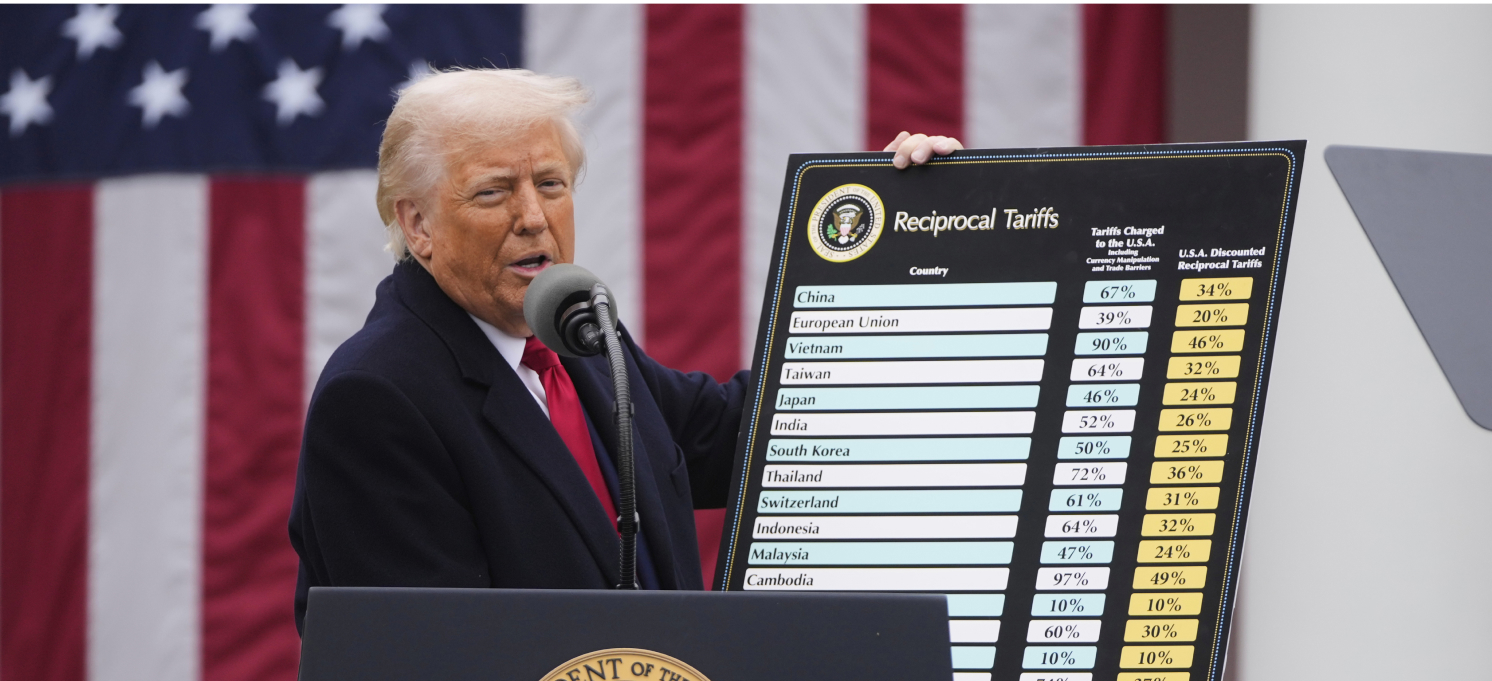
Kremlin's misplaced economic optimism
Hello! This is Alexandra Prokopenko with your weekly guide to the Russian economy — brought to you by The Bell. This week we focus on whether ordinary Russians believe the government’s claims that the economy is on the right track. We also look at Putin’s latest nuclear rhetoric and Ukraine’s calls to further isolate Moscow from the global financial system.
Are things really looking up for the Russian economy?
What’s the outlook for the Russian economy: optimistic or pessimistic? It depends who you ask. While the government’s own economists are pushing out positive vibes and patting themselves on the back for overcoming sanctions and maintaining growth, it’s a different picture on the streets. Russians themselves are continuing to transfer significant sums of money abroad and converting assets into cash, suggesting the population as a whole has little faith in what they are hearing from officials, or in Russia’s future economic prospects.
Officials’ optimism
The health of the Russian economy is always one of the key themes of the St. Petersburg International Economic Forum (SPIEF), the 2023 edition of which was staged last week. Setting the scene for the rest of the conference, at the opening session Central Bank chief Elvira Nabiullina, Finance Minister Anton Siluanov, Economy Minister Maxim Reshetnikov and Maxim Oreshkin, an aide to Vladimir Putin, all struck an upbeat tone.
Oreshkin claimed that half of all those who fled Russia in September 2022, following the announcement of a partial mobilization, have already returned home, citing banking statistics. Siluanov joked that it was the pessimists that had left and it was up to Russia’s economists to bring them back. According to The Bell’s estimates, at least 500,000 people left Russia and have still not come back.
Reshetnikov said even the Kremlin had underestimated the “safety net” underpinning Russia’s economy in 2022, and that “everything turned out better than expected.” He now expects the economy to move into a growth phase, “based on our domestic market, and our own supply and demand”. But, Nabiullina stressed, this does not mean Russia should close its doors to the rest of the world — on the contrary, “we need to integrate with other countries, with investors who are ready to integrate, and to enter export markets,” she told the assembled business delegates and policymakers. Reshetnikov and Siluanov said only private investment can drive the economy forward. “We have money in the economy,” said Siluanov. “Pretax profits of non-finance companies, excluding small businesses, are at 23% of GDP, and 10% of investment,” he added. All-in-all, the four officials agreed that there was significant potential for growth and a bright future lay ahead.
The session’s moderator, Andrei Makarov of the State Duma’s budget committee, carefully sidestepped any potentially trickier questions over the health of the economy and the panel avoided sensitive issues. Even the speakers’ hints at possible government spending cuts were drowned out by their relentless positivity — “maximum optimism,” as Oreshkin put it.
The real picture
In reality, the picture is a bit different. Despite the Kremlin’s hopes, Russian citizens are going against the cycle being talked-up by the government. While Russia’s cross-border trade is “de-dollarizing”, Russians themselves are “dollarizing” at an unprecedented rate.
As for the de-dollarization of trade, the proportion of “unfriendly currencies” in Russia’s net exports has fallen sharply since the start of the war, data from the central bank’s Financial Stability Review published late May shows:
- In dollar terms, some $10.1 billion worth of Russia’s net exports were denominated in euros in January 2022. By the start of 2023 that was down to just $0.9 billion and by the end of the first quarter had turned negative, with the euro accounting for minus $0.7 billion of Russia’s net exports.
- The dollar’s decline is less dramatic but follows the same trend — from $14.4 billion in January 2022 to $4.6 billion by the end of Q1.
- The ruble quickly jumped to take up a significant share of Russia’s net exports — from a negligible or negative monthly contribution before the war to $5.5 billion in dollar terms by May 2022. It has since floated around the $6-billion mark, sometimes climbing close to $9 billion.
- These currency trends are playing out as the overall value of Russia’s exports declines. From February 2022 to March 2023, with oil and gas prices falling, exports had dropped 24% to $38 billion, the central bank highlighted — a trend which also increases the share of the ruble in foreign trade.
But at the same time, trust in the Russian currency among Russians themselves appears to be falling. A survey by state pollsters VTsIOM in October found 64% of Russians wanted to hold their savings in rubles, 10% in the Chinese yuan, 8% in dollars and 3% in euros. At first glance, this looks impressive — but it can hardly be seen as an overwhelming victory for the ruble. The total proportion of those wishing to hold savings in dollars or euros in 2019-20, before the war, hovered between 8-14%. Before the coronavirus pandemic, just 1% of savers were interested in “alternative currencies,” and now one in ten is willing to hold savings in yuan, rather than the ruble.
Moreover, this is despite significant restrictions on depositing foreign currencies with Russian banks, which are directly forcing citizens to withdraw some foreign currency holdings. According to the central bank, in 2022 and the first quarter of 2023, Russian citizens withdrew 3.1 trillion rubles’ worth of foreign currency. But again, this figure is not an indication of growing trust in the ruble — over the same period, 2.6 trillion rubles’ worth of foreign currency was transferred to accounts in foreign banks and another 1.9 trillion was kept as “cash in hand.” Put simply, the funds withdrawn from Russian banks were not converted into rubles but instead transferred abroad or held as cash, with those amounts actually one-and-a-half times more than the total that was withdrawn. Altogether since the start of the war, Russians’ savings in foreign banks have more than doubled to 5.4 trillion rubles ($67.3 billion) as of April 2023, and the monthly flow of funds to foreign accounts is running at more than five times pre-war levels.
Where’s the money going?
More than just evidence of a lack of faith in the ruble, the increasing volume of funds being transferred abroad has a clear economic rationality. Monitoring from VTsIOM shows that it is young people with higher education, who live in big cities and have savings that are most likely to hold foreign currency accounts abroad. This is exactly the same group of people who are most likely to have left Russia in 2022. Emigrants need funds to live on in their new homes, and even “global Russians” who stayed continue to travel and buy goods and services in other countries. To do so, they need international bank cards, which are only available from foreign banks. In addition, a portion of the “leaking” funds are being used to support parallel imports.
Private investors are another group that have effectively been forced to transfer their funds to foreign accounts. Previously, Russians could purchase foreign securities through Russian brokers, but this is no longer possible. Since the invasion of Ukraine, transfers to foreign brokers are up 16-fold compared with 2021, reaching a total of 228 billion rubles. In 2023, this trend continued, with 50 billion rubles transferred in the first quarter.
In short, Russians continue to transfer funds overseas to pay for imports, to save, or to meet living costs after having left the country. This suggests that the population, despite all the restrictions, still prefers to hedge its bets and does not believe the optimistic claims of the authorities over the state of the economy.
The rise of cash in the economy is another worrying trend. Demand for cash exceeded seasonal norms and reduced liquidity by 0.2 trillion rubles in May, the Central Bank calculated. Some of that additional demand for cash was linked to the holidays at the start of the month, but it follows on from the overall volume of cash in circulation hitting 17.15 trillion rubles in April: an all-time record. Deputy Governor of the central bank Alexei Zabotkin tried to explain away the trend, saying it was a quirk of the economies in occupied Ukrainian territory, where “the [Ukrainian] hryvnia is no longer in use.”
But away from the four regions of Ukraine that Russia calls its “new territories”, such high demand for cash suggests the “gray economy” is expanding, and points to growing anxiety among Russians about access to their bank accounts. Outwardly, there are no real danger signs on this front, but the State Duma continues to pass various wartime laws and, as one federal official said, this trend “cannot fail to influence public behavior.” Increased reliance on cash could even be linked with growth in cash payments by Yevgeniy Prigozhin’s Wagner Group, suggested Bloomberg economist Alexander Isakov. Whatever the reason, a sharp increase in the use of cash erodes Russia’s tax base and indicates a lack of public faith in those running the economy.
Why the world should care
While Russia’s officials talk up the health of the economy on panel sessions in St. Petersburg, Russians out in the real world aren’t buying it. They’re sending their money abroad and switching to forms of payment that are difficult for the authorities to trace. It looks like people who have endured four economic crises in the past 20 years do not have much confidence in Russia, regardless of what the president and his economists are saying.
Putin renews his nuclear threats
President Vladimir Putin widened the list of possible reasons for a preemptive Russian nuclear strike on Friday in his address at SPIEF, Credit Suisse analyst Alexander Kolyandr noticed. Answering a question about whether Russia could use nuclear weapons in the ongoing conflict, Putin said it could, in case of a threat to Russia's territorial integrity, independence, sovereignty, or its own existence.
The first of those — naming a challenge to Russia’s “territorial integrity” as a reason to deploy nuclear weapons — contrasts Russia’s official doctrine on the use of nuclear weapons, which Putin himself signed into law last year. That document envisages that Russia could use nuclear weapons in the case of:
- Nuclear weapons being used against Russia or its allies
- Ballistic missiles being fired at Russia
- An attack on Russian infrastructure which could take out its own nuclear deterrence capacities
- An attack using conventional weapons which endangers Russia's existence
There is no mention of going nuclear to protect the country’s “territorial integrity”. Depending on how you read it, a threat to “territorial integrity” could refer to an “occupation” of Russian territory, including areas that Moscow sees as its own, such as Crimea or the four newly annexed regions of Ukraine.
It is not the first nuclear threat of this kind from Putin. Last year he said: “If the territorial integrity of our country is threatened, we use all available means to protect our people — this is not a bluff.” This was a clear hint at the possibility of using nuclear weapons, although on that occasion he stopped short of saying it directly.
The comments at SPIEF might be just a slip of a tongue, but to us look more like a carefully calculated step up the escalation ladder. It isn’t a coincidence that this week there were several publications by Russian political commentators — including those once considered relatively sane — on the possibility, and even desirability, of a preventive nuclear strike. Nor is it a coincidence that Putin said Russia has transferred its first tactical nuclear weapons to Belarus (though there are no independent confirmations of that yet).
Why the world should care
Putin’s comments still don't look like preparation for a nuclear war, but rather fear-mongering aimed at Europe, which still remembers the Able Archer panic of the early 1980s. Nevertheless, the use of nuclear rhetoric at an economic forum indicates the Kremlin's nervousness.
Moscow fighting against calls for further financial isolation
Russia is ramping up pressure on other countries to ensure it does not find itself placed on the Financial Action Task Force’s (FATF) black or gray list — a move that would further hinder Russia’s access to the global financial system. On the eve of the intergovernmental body’s next plenary meeting, Ukraine is demanding that Russia be blacklisted (The Bell wrote about Kyiv’s campaign here) due to repeated violations of FATF standards — specifically, its military ties to Iran and North Korea (which are already blacklisted), the deployment of nuclear weapons in Belarus and financing of terrorism via its support for the Wagner Group.
Blacklisted countries are effectively removed from the global financial system. In addition to Iran and North Korea, Myanmar is the only other country on the list. The “gray list”, which is more frequently revised, is made up of states with which financial transactions are subject to enhanced verification procedures. States on the gray list are those that in theory support the FATF’s recommendations and are working to address “strategic deficiencies in their regimes to counter money laundering, terrorist financing, and proliferation financing”.
Russia’s membership of the FATF was suspended in February 2023, a move which has already caused problems for Russian organizations, residents and citizens. After the suspension, Kazakhstan tightened its banking compliance and the Bank of Cyprus cited the decision as a reason to close some Russian accounts.
The consequences of being specifically added to the gray or black list would be even tougher. The likelihood of Russia being blacklisted next week remains very low. If it were to be, at the very least it would halt Russian oil exports to India and China, driving up global prices for commodities and triggering a fresh round of inflation. The prospect of being put on the gray list is also not very likely, but it is possible, and the Russian government’s diplomatic efforts to avoid that fate show they are taking it seriously.
Key figures
- Russia’s banking sector could generate more than 2 trillion rubles ($24 billion) in earnings this year if there are no new shocks, the central bank estimated, up from a previous forecast of 1.5 trillion. The main reason for the revised figures is a significant increase in banks’ margins, estimated at 4.3-4.5% this year, and earnings of 1.1 trillion rubles during the first four months of the year, due partly to currency revaluations as the ruble weakens.
- The U.S. Federal Reserve kept its base rate unchanged at 5-5.25%. The pause interrupts 10 consecutive rate hikes. The Fed anticipates a base rate of 5.6% by the end of 2023.
- In 2022, investors transferred more than 1 trillion rubles’ ($12 billion) worth of Russian assets to Kazakhstan, Frank RG reported with reference to data from Kazakhstan’s Central Securities Depository. The figure is an eight-fold surge from 2021 when 127 billion roubles (800 million tenge) was transferred from Russia to Kazakhstan.
- Prices in Russia were up 0.05% in the week from June 6-13, according to Rosstat. Annual inflation accelerated to 2.9% from 2.8% a week earlier.
What to watch this week
- Regional inflation (Bank of Russia, June 19)
- Business monitoring (Bank of Russia, June 21)
- Weekly inflation, June 14-19 (Rosstat, June 21)
Further reading
A North–South Corridor on Putin’s Dime: Why Russia Is Bankrolling Iran’s Infrastructure — Nikita Smagin on fledgling Moscow-Tehran infrastructure cooperation
Why Putin Will Never Agree to De-escalate — Regardless of Ukraine’s counteroffensive, Russia is bracing for a long war, argues Maksim Samorukov
How Putin’s War Became Russia’s War — Eugene Rumer says the country as a whole will struggle to reckon with its crimes in Ukraine



PAID SUBSCRIPTION LAUNCH
From May 1, 2025, The Bell in English will no longer be free
From May 1, 2025, all The Bell’s newsletters and online content will be behind a paywall. We have taken this decision so that The Bell can remain financially independent, and maintain our high standards of journalism and economic expertise






